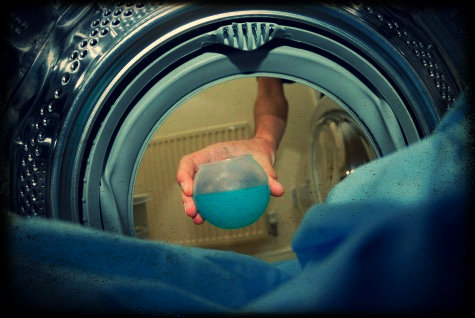Smell is a potent wizard
that transports you across thousands of miles
and all the years you have lived.Helen Keller
I have a sensitive schnoz. I can’t take most perfumes, I’m very very picky about lotions, shampoos, detergents. I can tolerate citrus-scented things if they’re not overpowering, but I prefer fragrance-free everything.
I think that since I started actively avoiding fragranced products, I’ve only become more sensitive. Whenever we go to a show or a place with crowds or lines, I’m careful to pack some Advil in my bag, because all too often I wind up too close to someone who got a little too enthusiastic with the perfume or hairspray. I’ll wind up with a headache so bad I can’t see— an awesome situation to be in when you’ve taken the kids somewhere “fun” and have a long drive home.
I always assumed this was just me being me, but apparently my sensitivity might have a scientific explanation.
A recent study researched 25 popular air fresheners, laundry products, household cleaners and personal care products containing “fragrance”— a thoroughly unregulated term; the chemicals that make up a “fragrance” aren’t legally required to be disclosed— and found that:
- the 25 emitted 133 different volatile organic compounds (VOCs), averaging 17 VOCs per product;
- a quarter of those are classified as toxic or hazardous under federal laws,
- some are classified by the EPA as probable carcinogens, with no safe level of exposure, and
- each item tested gave off at least one of these chemicals.
And yes, some of the items tested were labelled green or all-natural.
A second study captured the fumes from dryer vents. When a load of clothing washed in an undisclosed scented laundry detergent (my money is on that headache in a jar, Gain) was put into a dryer with scented dryer sheets, the captured emissions contained 25 VOCs, including seven hazardous air pollutants. Two of those – acetaldehyde and benzene – are classified as carcinogens with no determined safe level of exposure.
The researchers estimate that in the Seattle area, where the study was conducted, acetaldehyde emissions from this brand of laundry detergent would be equivalent to 3 percent of the total acetaldehyde emissions coming from automobiles. Emissions from the top five brands, they estimate, would constitute about 6 percent of automobiles’ acetaldehyde emissions.
It’s not a killer all on its own, but it’s one more way we’re slowly poisoning our air, our water and our bodies, and it’s totally unnecessary.
Just switch to fragrance-free or unscented, or demand that companies disclose what constitutes “fragrance” in their products.
Add a little vinegar to your wash for softening (the smell dissipates upon drying), or try some of those dryer balls to keep fabrics cozy.
Make sure your dryer vents outside and not into your house, or even better, line dry.
I like Sun & Earth detergent, especially since I can refill at the local co-op, and I line dry or use dryer balls (mine are the typical spiky blue ones you get at Target, but when I went to find a link I saw that they can start staining when they degrade, so I’m recommending these felted wool organic ones
instead). They’re pretty good about cutting down dryer time and our clothes are reasonably fluffy and static-free— although, to be honest, I don’t recall ever having a static problem.

Leave a Reply